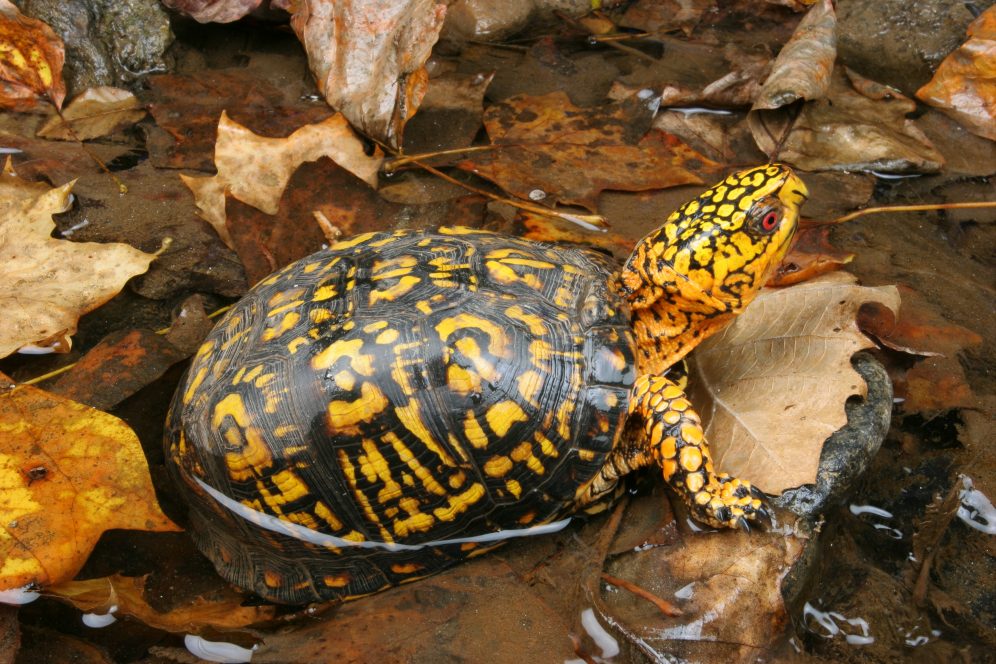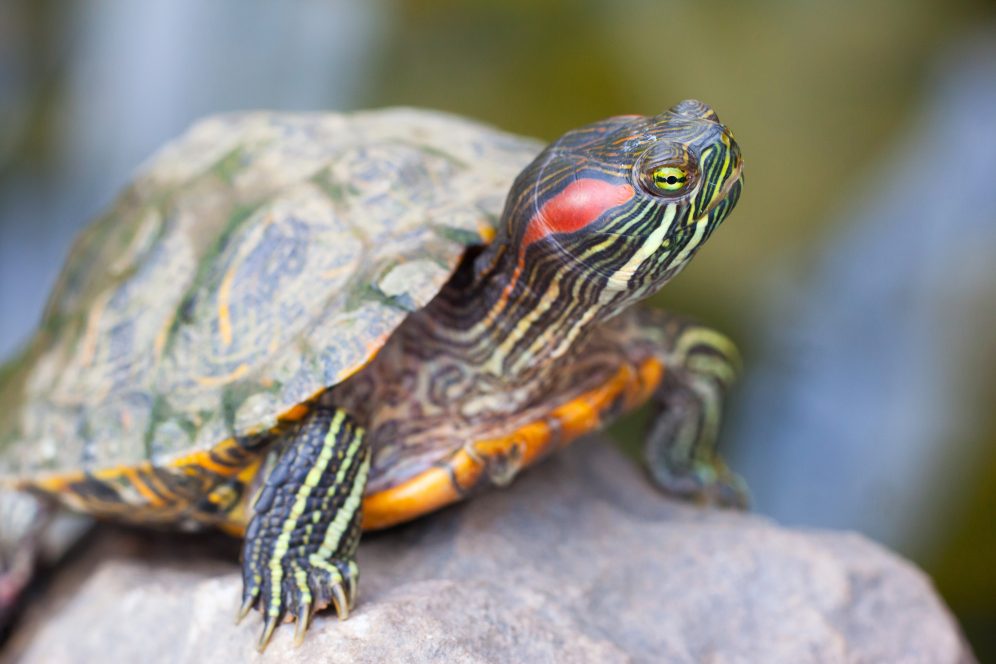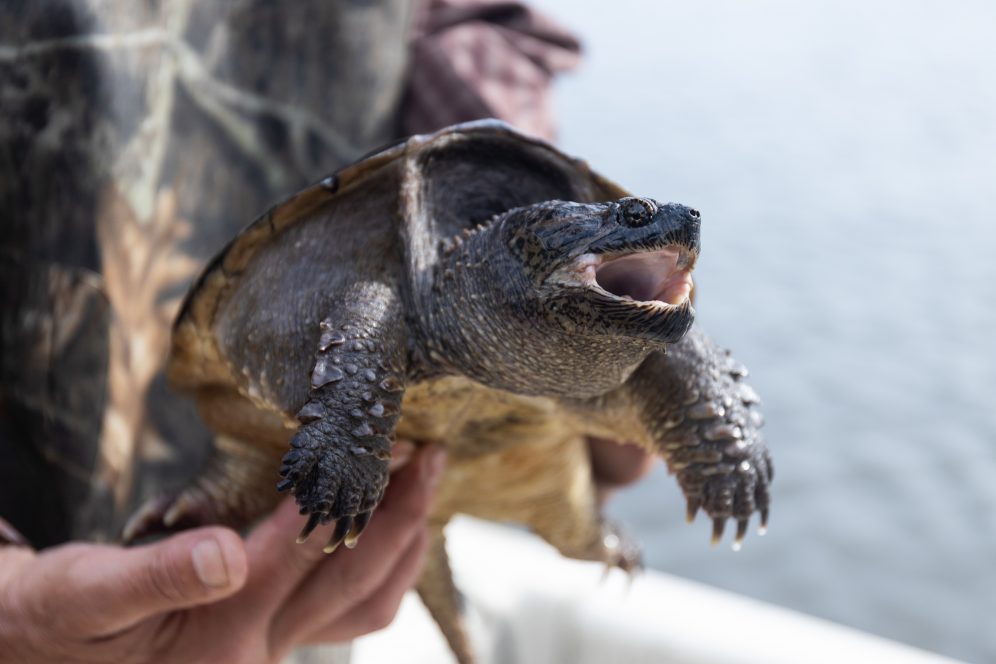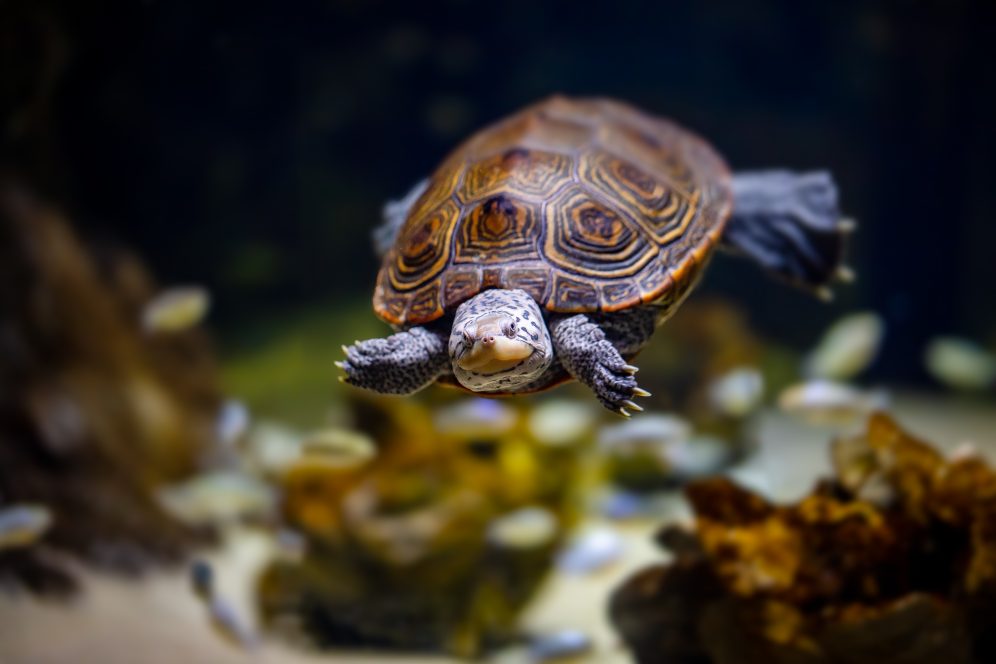|
Tis the Season for Turtles: Maryland turtles are out and about in summer's warm weather.
Published July 28, 2020 in Conservation A turtle isn't Maryland's state reptile for nothing. Eighteen turtle species can be found throughout the state and in state waters—in ponds and bogs, streams and rivers, woodlands and wetlands—from the mountains of Garrett County to the waters of Worcester County and everywhere in between. With so many turtles making their way (slowly) around, it's not uncommon for Marylanders to encounter them in the wild, particularly in summer when the weather is warm. If you see one, what should you do? The general rule—as with all wildlife—is to keep a respectful distance and look but don't touch. You can disrupt a turtle's activity by touching or moving it. For example, aquatic species encountered on land are most likely females looking for a suitable spot to dig a nest and lay eggs. Females strive to find the perfect location where predators can't find their eggs and where their hatchlings can find their way back to water. Handling them during this vulnerable time would be very disruptive. Eastern Box Turtle With their dark shells covered in yellow-orange spots, Eastern box turtles are one of the most encountered species in Maryland, often found while hiking through forests. Unfortunately, many box turtle populations are now in decline due to habitat loss from development and road mortalities. This woodland species is terrestrial, spending most of their time on land, in sunny open spaces as well as shady hiding places. They have a strong homing sense and are known to live out their lives in an area about the size of a football field, which is why they should never be picked up and moved. An exception is if you find a box turtle in a place where it's not safe, like trying to cross a road. Each year, countless turtles are killed by cars. Among the tips the Mid-Atlantic Turtle and Tortoise Society offers for helping a turtle cross a road is to move it the shortest distance possible in the same direction it was heading, at least 30 feet from the road. Follow MATTS' recommendations for safely handling turtles, using two hands to hold both sides of the shell and lifting gently. A thorny briar patch or carpet of fallen leaves gives the turtle places to hide from predators. Red-Eared Slider From March to September, these turtles with bright red stripes on the side of their heads can be spied swimming and basking in the Inner Harbor, Lake Montebello and Lake Roland, among other spots in Baltimore City and most Maryland counties. They prefer freshwater habitats but can tolerate low-salinity, brackish water, and favor the still water of ponds, lakes, reservoirs and slow moving sections of rivers to fast moving streams. These turtles are an invasive species, native to the mid- and south-central United States. Thanks to the pet trade, the red-eared slider is now the world's most widespread freshwater turtle. Hatchlings the size of a quarter can grow bigger than a dinner plate and live for 30 years, so irresponsible pet owners choose to release the turtles rather than continue to care for them. Red-eared sliders with shells bigger than 4 inches can still be sold in Maryland pet shops, but it's illegal to sell hatchlings. If you see red-eared slider turtle hatchlings for sale in Maryland, it's best to report it to the Natural Resources Police at 410-356-7060. And if you have a pet turtle of any kind that you can no longer keep, do the right thing; don't release it into the wild. A close relative of the red-eared slider, the yellow-bellied slider, is now being observed with increased frequency around Maryland. Yellow-bellied sliders are native to the southeastern U.S. and, like the red-eared slider, are most likely now being seen in Maryland because people have released unwanted pets into the wild. Snapping Turtle Snapping turtles are another common species found throughout Maryland, in or very near fresh or slightly brackish water. They can grow quite large—with a shell length ranging from 8 to 14 inches—and their bites pack a punch. Because their necks are long and flexible enough for their powerful jaws to reach most parts of their body, it's not a good idea to touch one or pick it up. Female snapping turtles sometimes lay their eggs a fair distance from the water they emerged from, so you can sometimes find hatchlings far from water, trying to make their way to it. It's important to leave the hatchling outdoors, but if you feel it's in danger, you can carefully move it closer to the water's edge where there is plenty of mud and places to take cover. Diamondback Terrapin The diamondback terrapin is Maryland's official state reptile and has been affiliated with the University of Maryland College Park since 1933. Terps officially became the school's mascot in 1994. To protect diamondback terrapins in Maryland, a 2007 state law (which the National Aquarium helped pass) bans removing them from the wild for commercial purposes. Young terrapins are vulnerable to predators on land, in water and from the sky, including birds, raccoons, opossums and foxes. They prefer brackish water and spend their early years hiding in marsh grass habitat that gets flooded by high tides twice a day. If you find a terrapin out of habitat, it's best to release it in the nearest marsh grass habitat during a high tide. Share What You See If you happen to see a turtle or other reptile in the wild, whether during the City Nature Challenge or not, consider uploading a photo and information to iNaturalist to share your find with others!
0 Comments
Your comment will be posted after it is approved.
Leave a Reply. |
Have a blog or blog idea?
Let us know (click) Other Blogs
VA Native Plant Society - click Brenda Clement Jones - click John Muir Laws' Blog - click Megan's Nature Nook - click Categories
All
Archives
September 2023
Blog Administrator:
Kathleen A. VMN since 2018 |



